Artists report on nocturnal inspirations and frustrations
I once described Louise Bourgeois as having “a direct pipeline to her unconscious,” and that still seems a fitting description for an artist who came of age in Paris at a time when the Surrealists were the force majeure in the art world. As anyone knows who’s ever seen a kitschy canvas from Salvador Dalí or stumbled through a gallery of Magritte’s magical mysteries, dreams reportedly played a large part in the movement’s imagery. Breton and other ringleaders urged follower to mine their repressed inner worlds of sexuality, desire, and violence for subject matter, and so they did (though I still question if Dali really dreamed of melting clocks, and why he needed so many of them).
Dreams were a big deal for that era, of course, because the artists seized on the works of Freud, particularly The Interpretation of Dreams. Though it was published more than a hundred years ago and ransacked by creative types in the decades following, I wondered if dreams still played any part in the approach and imagery of contemporary artists. Almost a dozen responded with a resounding yes, and here are some of the ways in which dreams—or more generally sleep—connect with waking realities.
Karen Jilly
My work is based on a structured aesthetic that many times includes a house shape. It wasn’t until your question that I realized that I do have reoccurring dreams/nightmares about living in a house that I don’t recognize, and then I discover that it has hidden rooms. Sometimes it has multiple floors that I never knew existed. I have been having variations of this dream for at least the past 30 years. The house and new areas/floors are always under construction with tarps and plastic sheeting hanging. I can never comprehend how I didn’t know they existed before. Many times, these newly discovered spaces are inhabited by strangers, which is really alarming.
And strangely enough, I am working on a new series which I am entitling “Hireath,” which is a Welsh word, according to one source, that is “somewhat difficult to describe in English, for the reason that there is no single English word that expresses all that it does. Some words often used to try to explain it are homesickness, yearning, and longing. But there is more depth to hiraeth than in any of those words on their own. It seems to be a rather multi-layered word, which includes a different variety of homesickness than what is generally referred to. This kind of homesickness is like a combination of the homesickness, longing, nostalgia, and yearning, for a home that you cannot return to, that no longer exists, or maybe never was. It can also include grief or sadness for who or what you have lost, losses which make your ‘home’ not the same as the one you remember.”
I now believe that this is what I dream about, and I am doing a series on it. Shown here is the work in progress.
Carolyn Ashton
I not only dream, but often in such detail it is a bit disturbing. Sometimes I see solutions to works in progress, sometimes I create totally unrelated artworks which I’ve developed further. Sometimes I create totally off-the-wall products with no idea where these thoughts come from. Just last night, I dreamt of creating a new baby bath towel. It was somewhere between a pinafore and a hooded towel. It’s like my brain never shuts down. I think I sleep well—eight hours at least—so perhaps that helps produce dreams that are often inspirational.”
Bob Clyatt
I assume every artist has some form of dream visioning, but maybe not. In the past I used to wait for an actual dream image to come and wake me up, then I would go into the studio to recreate that piece. Once I remember wandering around a building in a kind of lucid dream state, coming around a corner, and seeing this perfect piece. I was so startled I woke up and drew it. I did my best with what I saw there, in the Eight-Head Composition.
But waiting around for lightning to strike is time consuming. So for many years now I’ve made a practice of lying in bed for a half hour after I wake up, eyes closed, nudging myself along various paths of visual inquiry, seeing what comes up. Sometimes I get gifts straight out of the blue that way, other times it’s more a way of manipulating a design I’ve been thinking about, trying out different colors, finishes, moving compositional elements around in my mind’s eye. Hanging out in this dreamlike “hypnagogic” state is an old trick for creative ideation and is much nicer than jumping out of bed because of an alarm clock. Another good way to get there is a long hot bath in a darkened room.
Nancy Reyner
I don’t paint from visions I have in dreams while I sleep. But I do paint from dreamlike visions I get while awake. Those probably are not the type of dream visions the Surrealists were using.
I wonder, though, if it’s not a matter of different times. The Surrealists were working at a time when psychology was just emerging, so using dream states as inspiration was a very contemporary thing to do. Today I feel a popular philosophy merges physics with spirituality—East meets West, so to speak. So books like my personal favorite The Fifth Agreement, by Don Miguel Ruiz, speak of the illusion of reality—that what all our senses describe is in actuality a dream. Not a new thought, but it seems to have gained a new popularity.
Marietta Patricia Leis
My art is very much about a sense of place, and my dreams often suggest or direct me to a place. There is often a bit of anxiety or angst involved in the dream: a missed plane, a crowded hotel room or a forgotten reservation, misunderstood street directions. And it’s that fear factor that usually is the clincher. Because I have determined early on that I would never let fear control me—that I would see fear as something to investigate, understand, and move through.
Thus I researched to find an artist residency that embodied the atmosphere of anxiety I had in a dream, as that had become my new mountain to conquer. One of these dark places was in Iceland in the winter. The time I spent there did allow me to paint darkness and cozy up to it and feel much more comfortable and even seduced by the dark.
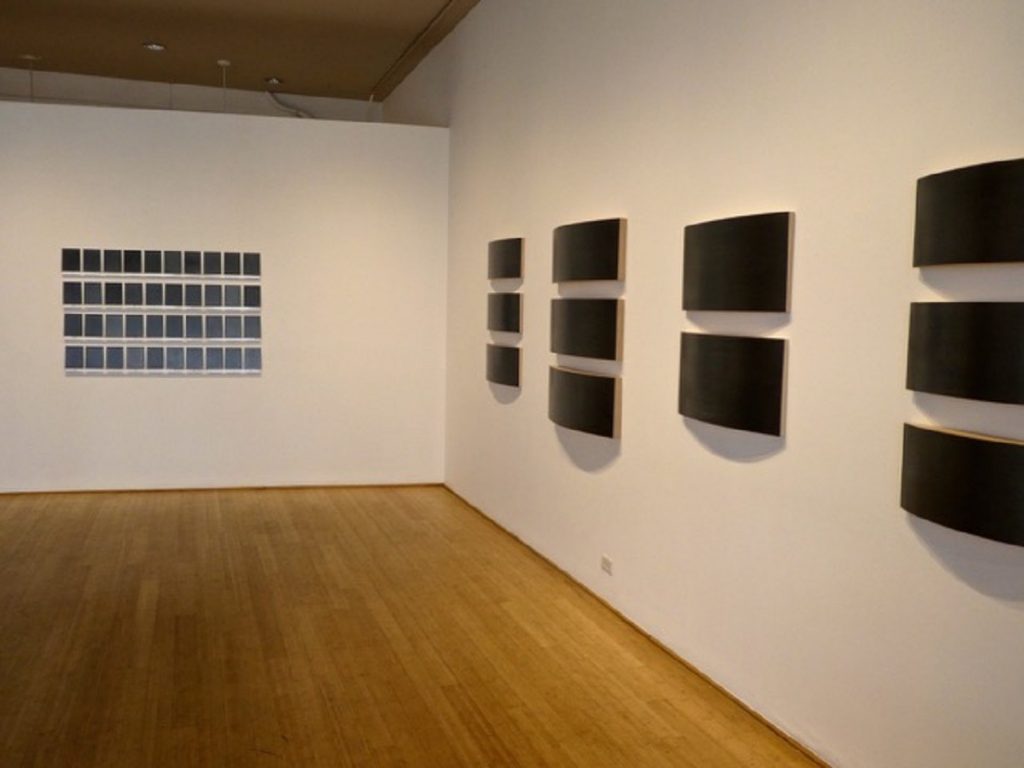
Marietta Leis, burnished graphite paintings made in Iceland at Warren Contemporary in Denver, CO, spring 2016
Robert Straight
Recently I’ve been waking up (I think) but I’m not sure if I’m awake or if I’m dreaming. It’s seems to me to be a weird place between the conscious and the unconscious. This usually happens when I’m stuck in the middle of a painting and I start mentally working out what options there are to get something to happen the next day. The dream really seems as though I’m in the studio, actually painting, making decisions about how to push the painting ahead. It’s a wrestling match between the work and me and it’s totally real.
At times I’ve had such a night-time dream revelation that I’ll definitely wake up and either go to the studio or write myself notes and make drawings of what I think I should do. At other times when I don’t physically take action, by the morning I’m not sure if it was a dream or if I was actually awake. This sleep-dream can go on for quite a long period but the weird thing is if I look at the clock, it’s always 3:33 AM.
Since this seems to be ongoing experience, it makes me think of Philip Guston’s “sleep” drawings and paintings. He did so many variations on sleeping that he must have been having the exact experiences where life and the mental demands of the studio co-exist .
MJ Bono
I have had many dreams about creating paintings. My studio is small and a constant limitation and many of these dreams begin with me entering a huge studio. Sometimes I discover that I can open the back of a closet and walk into a secret room. The studio is always lined with many large abstract paintings in different stages of development. In my dreams, I feel very happy and know what I want to do next to finish them. I always think these are so great—that I’ve never seen anything like them before. But when I wake up I usually don’t remember what the paintings looked like at all. However, I am left with a strange mood of contentment. And feel encouraged to start painting as soon as possible. Does anything come through in the actual new paintings? I do not know.
I do remember one dream, however, in which I finished a painting of a huge diamond suspended in space. The image was made up of intricate, colorful diamond facets. It glowed with internal light. The mood was similar to the one created by the spaceship in the movie “2001: A Space Odyssey.” But I’ve never wanted to actually paint this.
A couple of years ago I saw an advertisement for an exhibition of paintings of diamonds and other gems. Huge paintings. Rendered very well, but they left me cold. I thought they were awful. I’m so happy I never painted such images.
Andrea Broyles
I am not inspired by my dreams as yet, but I do gather a lot of information from the stage between consciousness and sleep. If I am having trouble in the studio I focus on this as I am falling asleep and sometimes come to a resolution. I have also dreamt of solutions or fantastic creations, but I forget them when I wake up. I remember only that I had all these answers to my problems in my dream.
I do like to look at or read about art before I go to sleep, hoping that something will brew during my sleep state. So far it has not worked but it is relaxing. My dreams are about dealing with stress and anxiety, so there has been no imagery that I could use per se. While I am in my studio, however, I take short cat naps in my chair and let my ideas percolate, but that is a more controlled situation.
Archie Rand
Years ago, when I was doing very large paintings under the sway of Greenbergian aesthetics, I had a dream that I took all the autumn leaves that I could find and annealed them, as a skin, with no blank spots showing, using acrylic medium, to a canvas that was the size of the old Kodak billboard (unspeakably enormous) in Grand Central Station. This “leaf painting” was installed in Grand in place of the Kodak transparency that used to hang there. Excited by the “logic” of the dream, the next week I did such a painting with dimensions about five feet high by 24 feet long.
I had another dream a few years later where I was at a stuffy, Upper West Side cocktail party, talking to Pablo Picasso, but in this dream Picasso was a fat, squat, jowly guy with flappy earlobes, who looked like a caricature from Jack Levine’s painting Feast of Pure Reason. In the dream Picasso was a foot shorter than me. He said, “Let’s get outta here, kid.” I was so honored. When I woke up I decided to paint some late Picassoid-type figures, which I did for about a week.
Sandra Filippucci
There is a distinct difference between my Dark Dreams, involving people I know or knew, and my Art Dreams, which tend to involve a suggestion of landscape. The Dark Dreams occur in rooms—closed spaces with stairs and rarely a window. The Art Dreams tend to be in an “etherscape” (like an edgeless photographer’s backdrop), with occasional glimpses of a tinted shoreline or a hill. Art Ideas materialize and hover until I wake up and catch them. Dark Dreams take energy whereas Art Dreams give energy. I wake up energized with a clear visual connected to a current body of work, and my mind holds on to it throughout the day.
Dark Dreams are inchoate and arbitrary—demon streams in Byzantine tunnels, but they both feed each other, the Dark and the Art. In a recent Art Dream, I saw an inverted flower slowly growing taller and taller and that became this “Armor Dress” study.
Clarissa Shanahan
Initially, while struggling to clarify the direction for a particular series of paintings, I had a dream one night in which I saw a couple of completed pieces. The dream had crystallized all the vague ideas that were floating around in my mind. While working on these, the ideas for the rest of the series began to reveal themselves in dreams. This process went on to become a completed series of paintings called “The Mechanics of Nature.”
I started to do whatever I could to capture these images in my memory upon waking—write them down, draw thumbnails, and file them. Since then, I’ve had a number of occasions where I wake up with a fully realized composition in my mind. Whether I see a painting itself, or just get the seed of an idea, almost everything in my work comes out of my back brain before my front brain! I’ve often thought that that initial series is what turned on the faucet, so to speak, and has helped me develop the habits of memory and inspiration from my dreams.
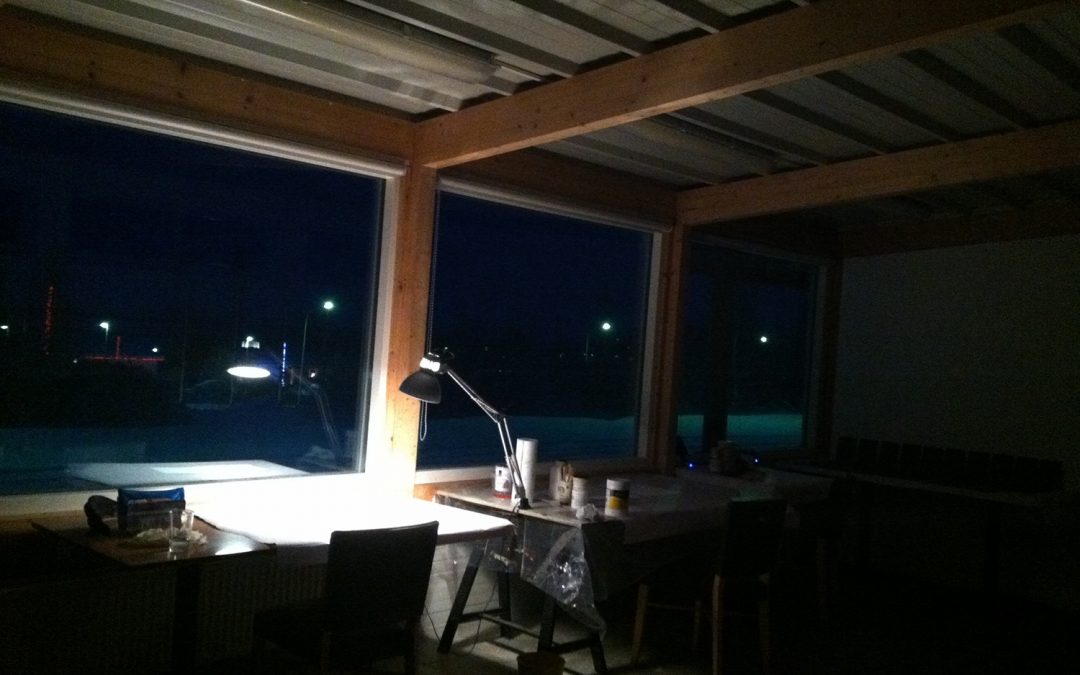
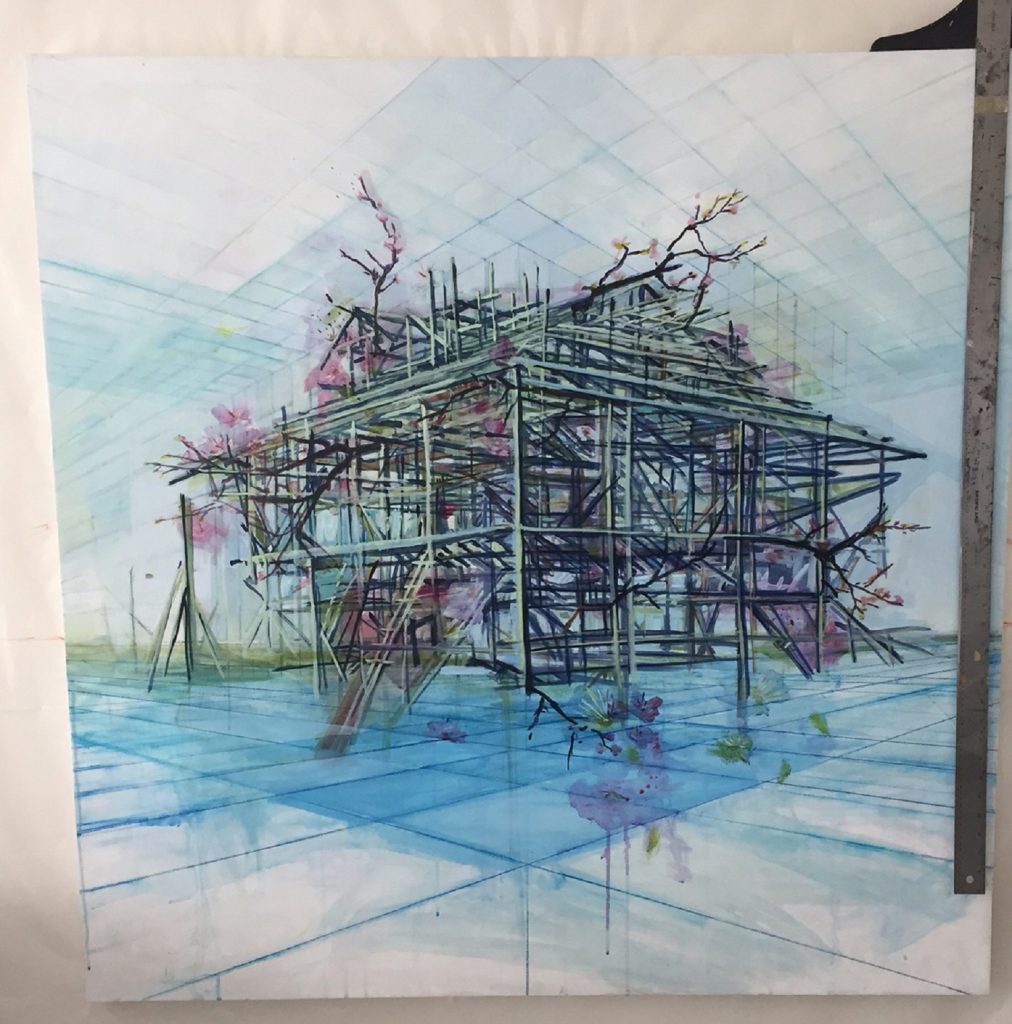
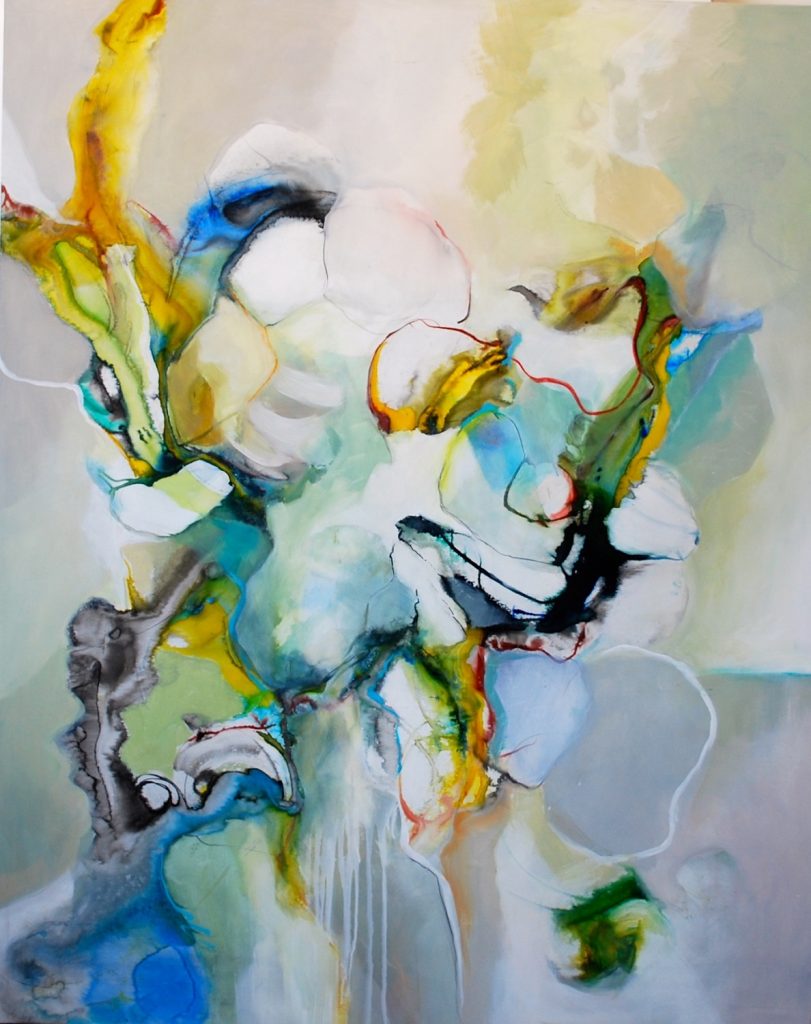
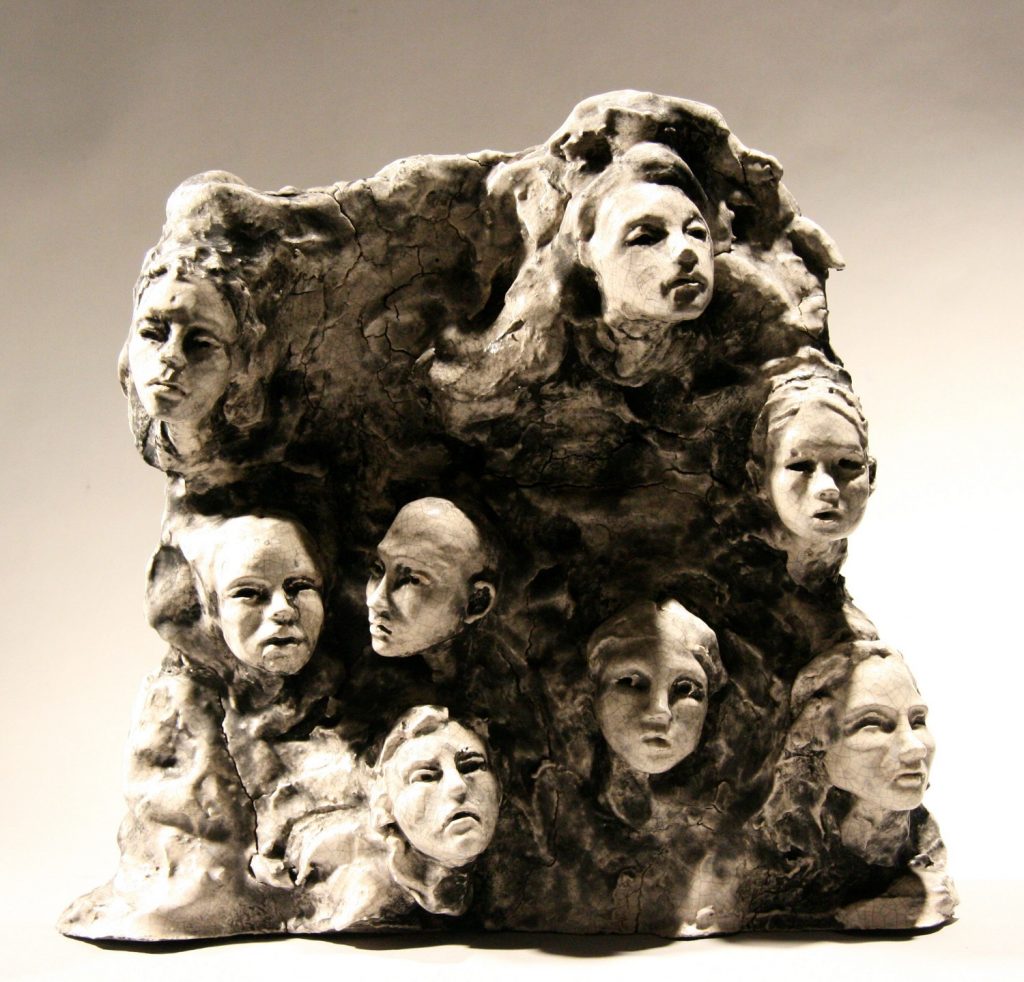
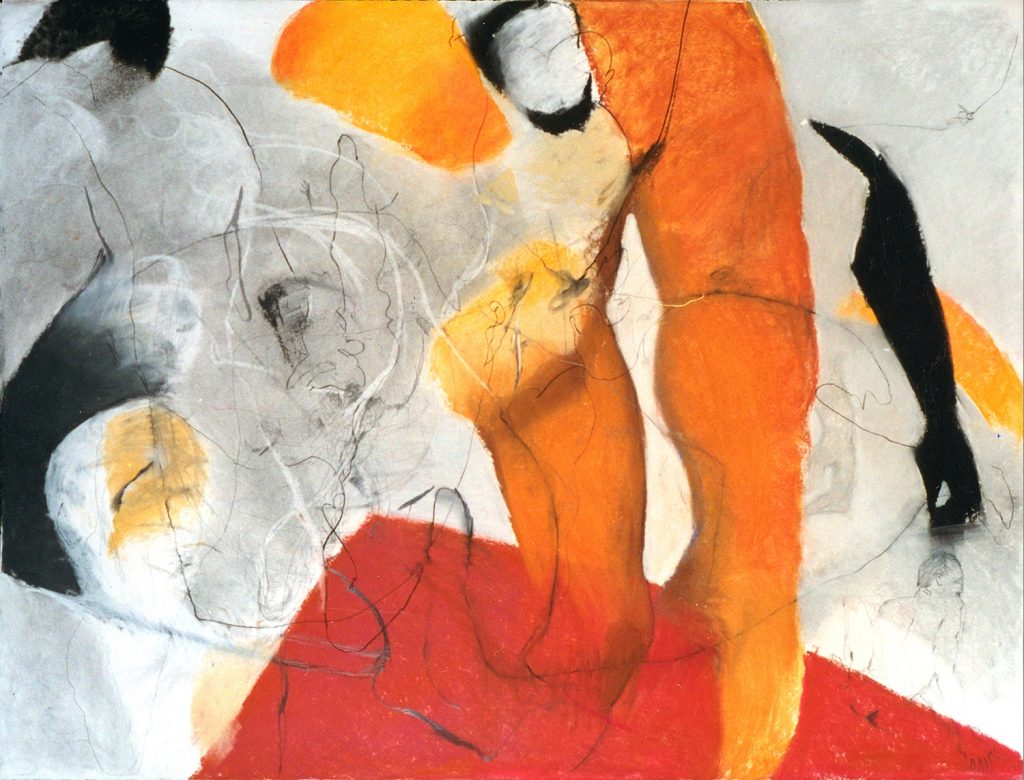
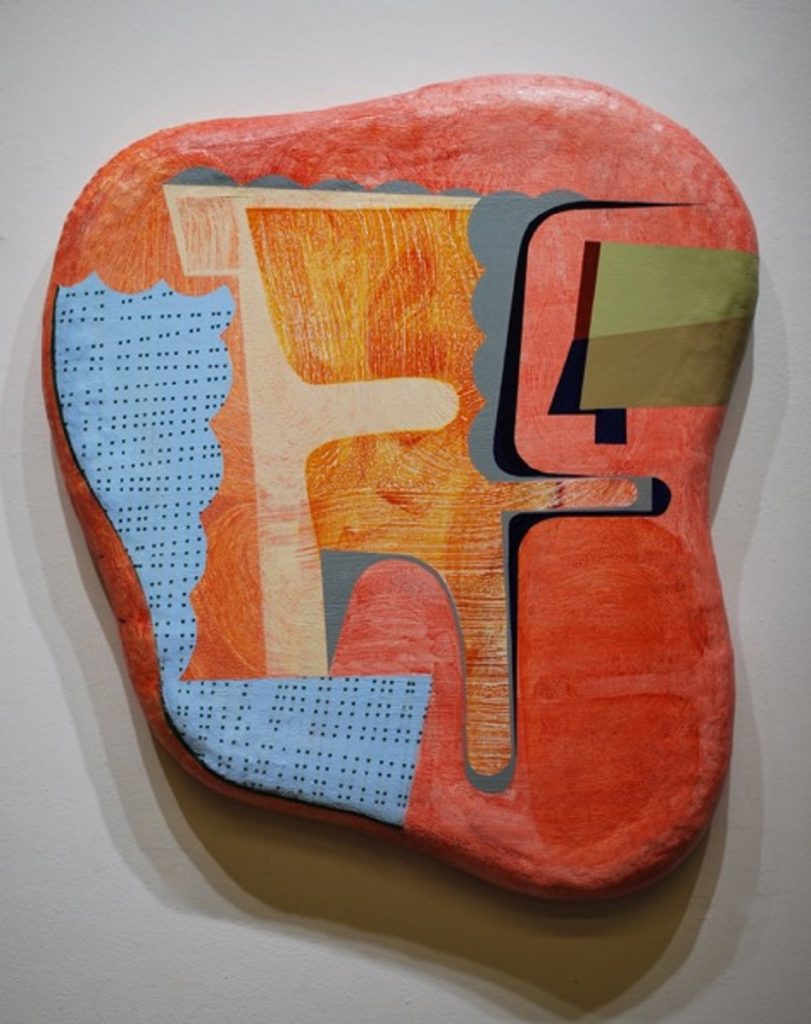
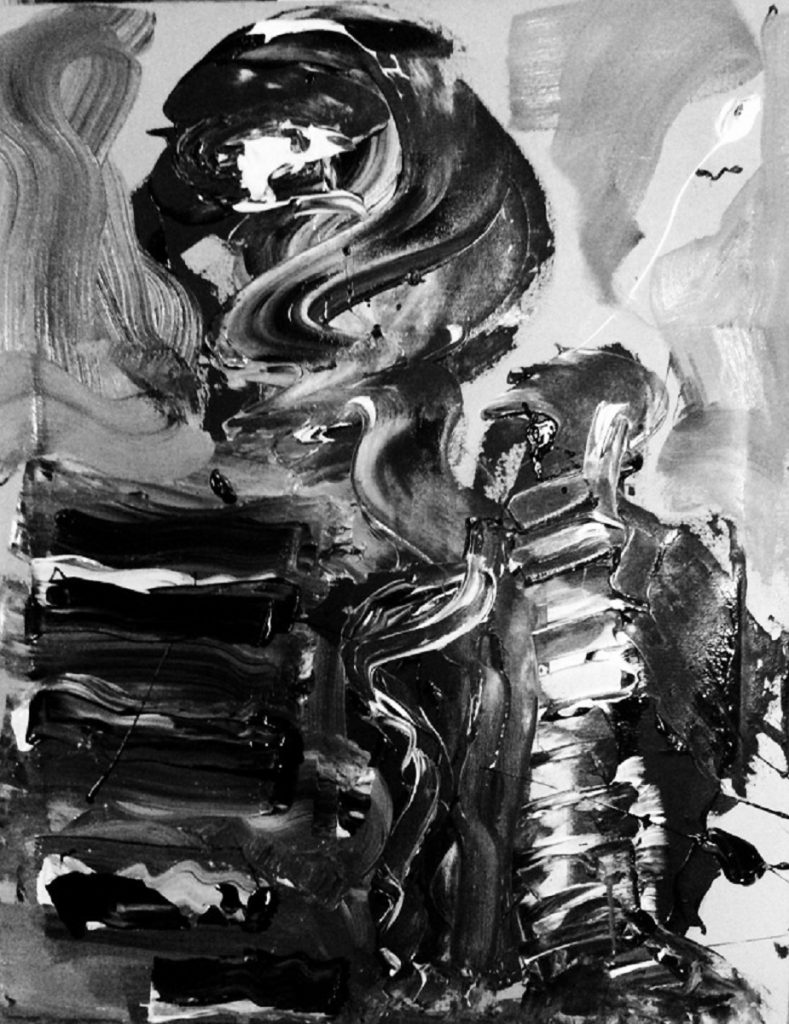
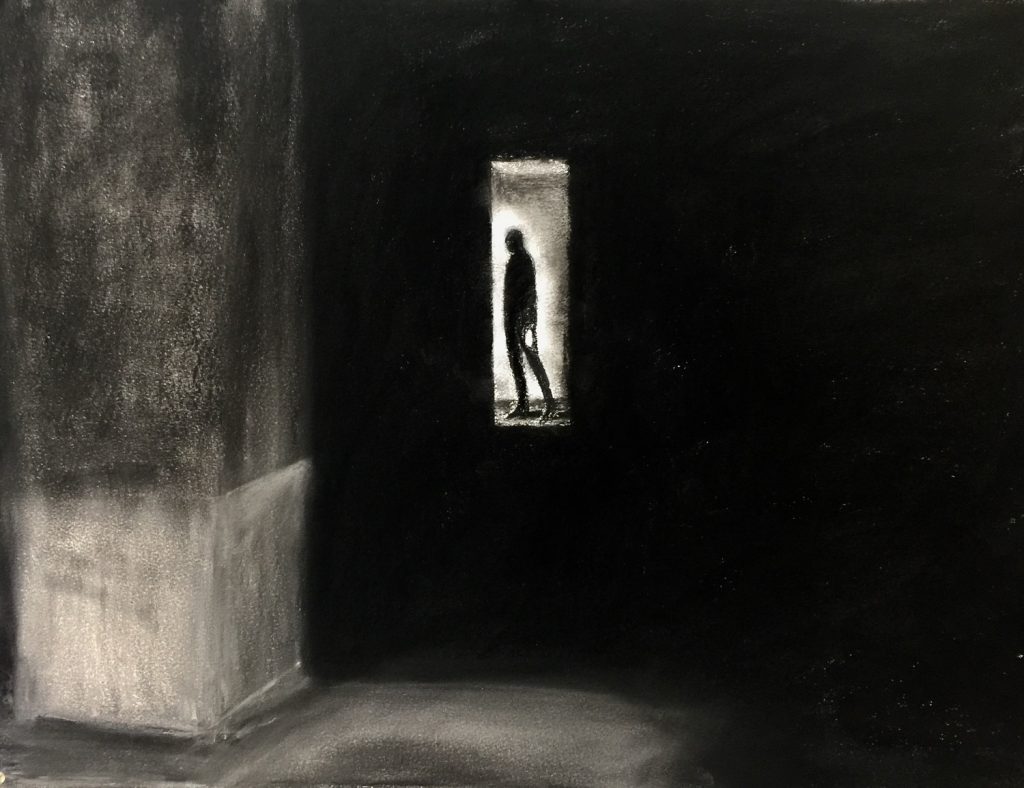
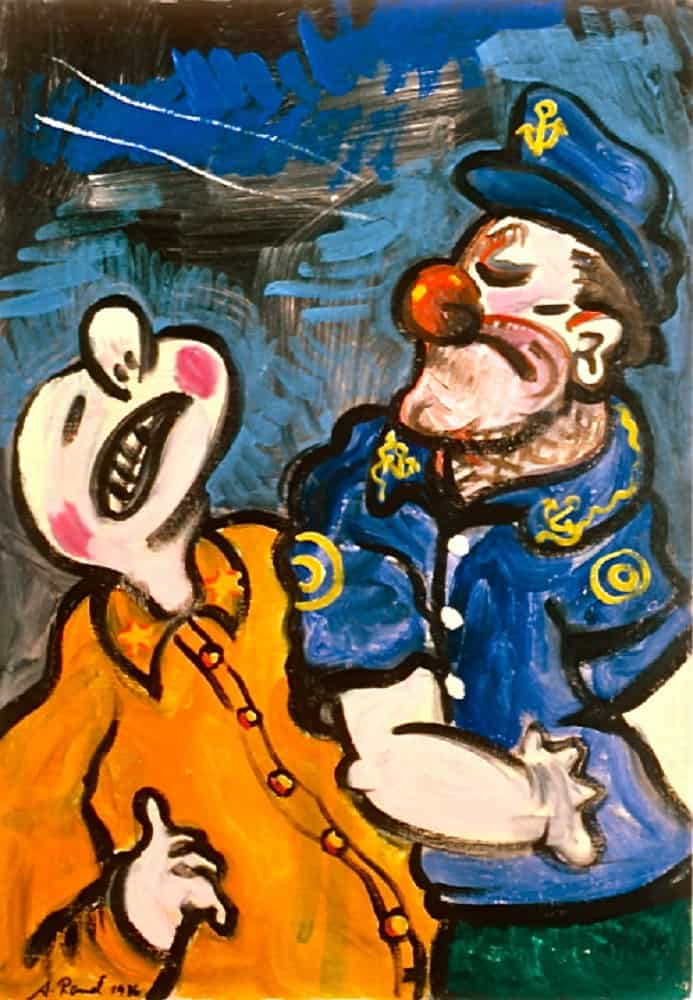
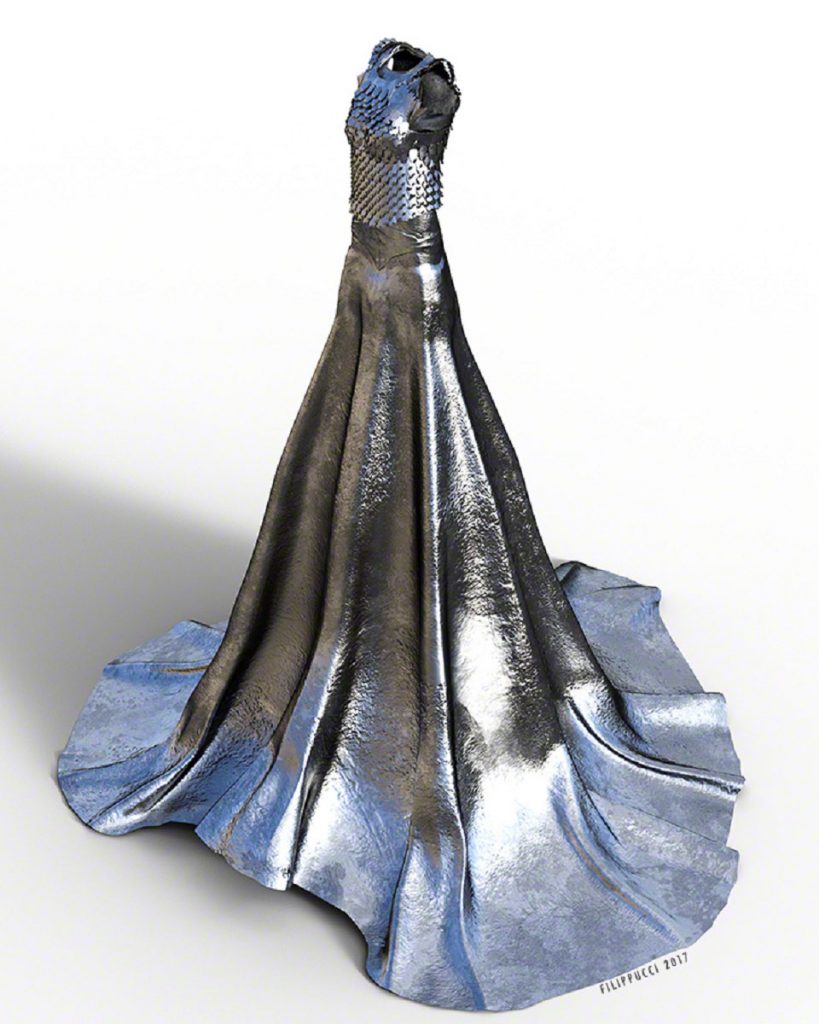
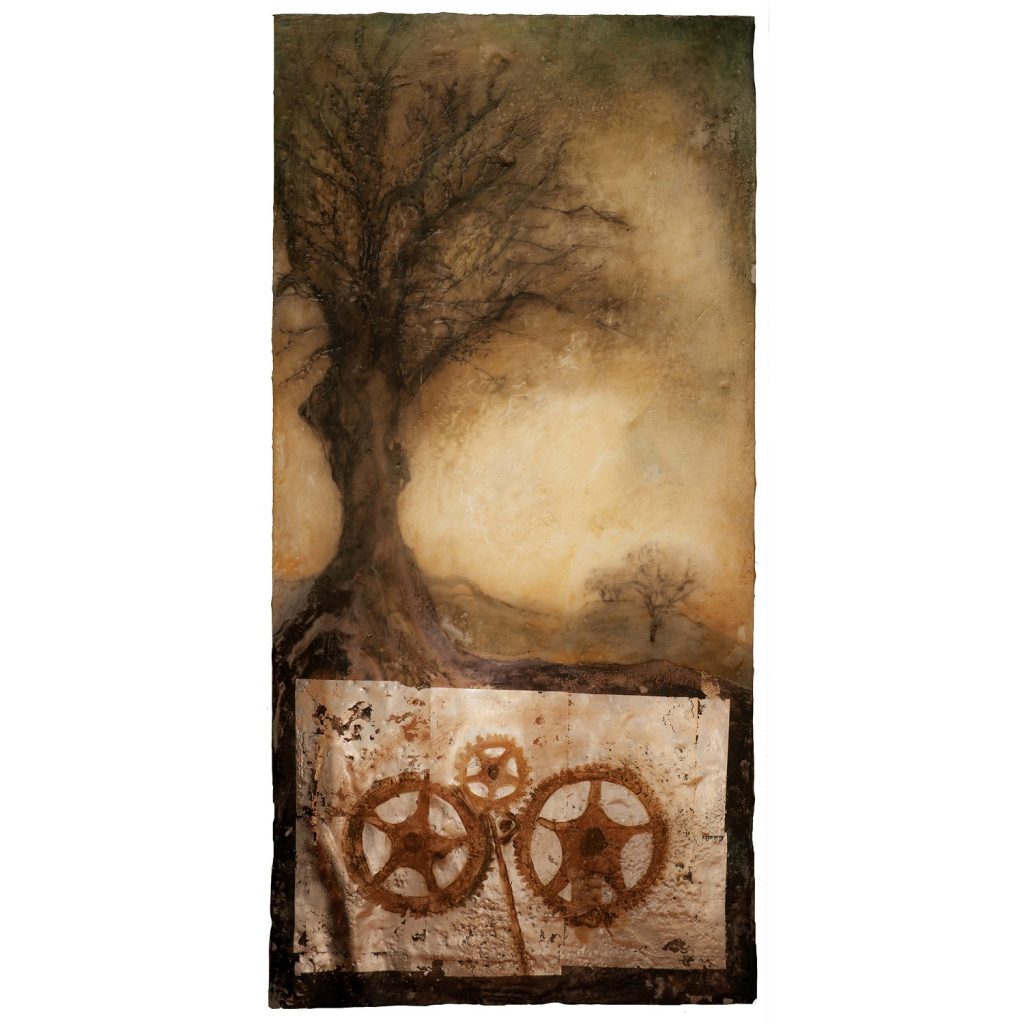
A dreamy posting….informative and interesting. Thanks Ann.